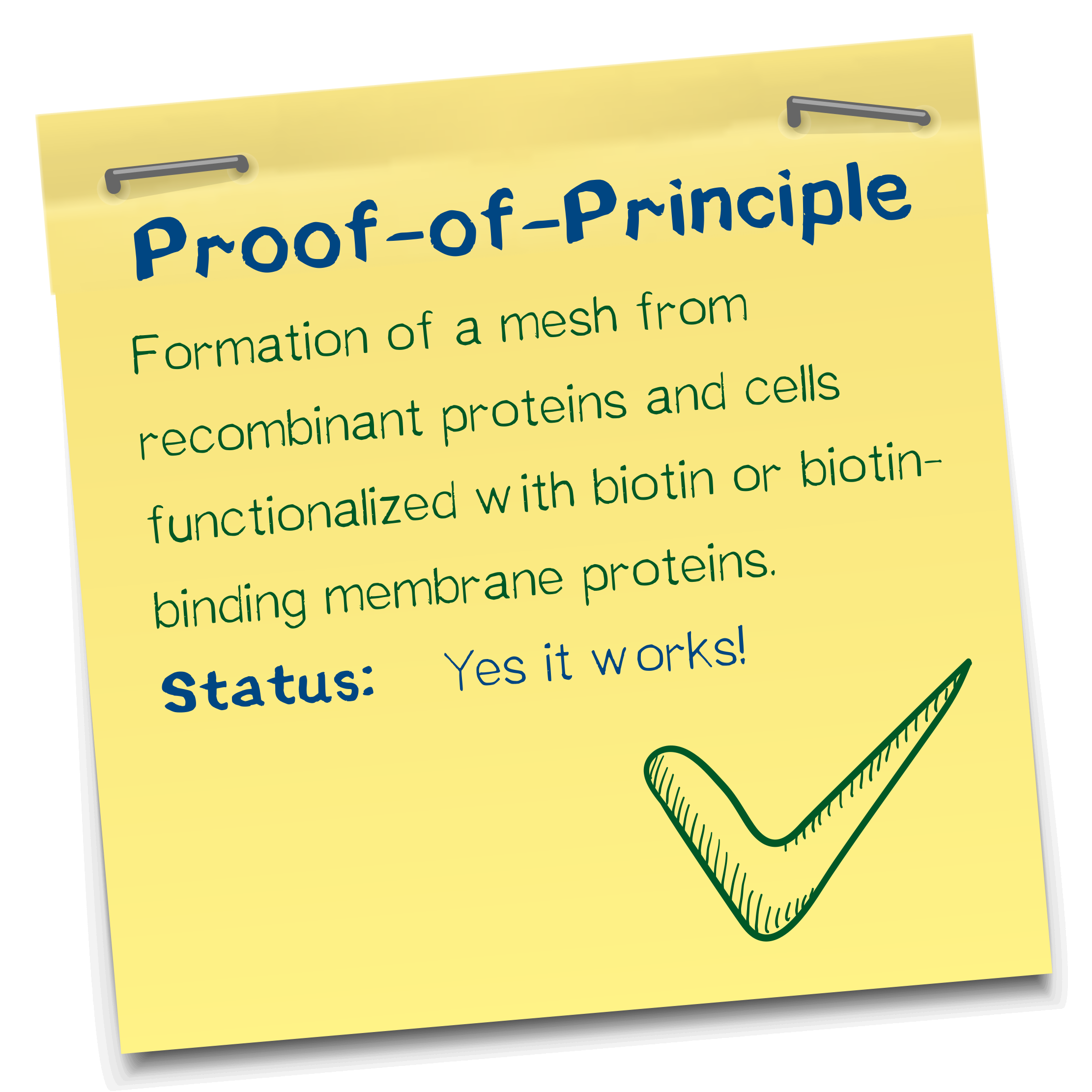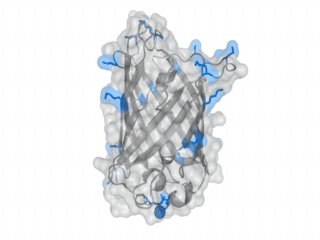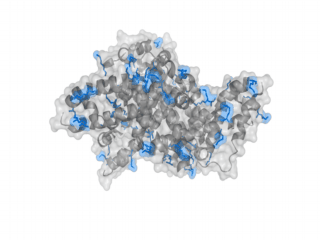| Line 1: | Line 1: | ||
{{LMU-TUM_Munich|navClass=project}} | {{LMU-TUM_Munich|navClass=project}} | ||
__NOTOC__ | __NOTOC__ | ||
| − | + | [[File:Muc16_Sticker_Proof_001.png |right|350px]] | |
[[File:Muc16_Sticker_Polymerization_001.png |right|400px]] | [[File:Muc16_Sticker_Polymerization_001.png |right|400px]] | ||
Wichtiger Kommentar: Polymerization wird Proof-of-Principle page. | Wichtiger Kommentar: Polymerization wird Proof-of-Principle page. | ||
Revision as of 19:29, 16 October 2016
Wichtiger Kommentar: Polymerization wird Proof-of-Principle page.
Introduction to polymerization
Design: Why we chose the Avidin & Biotin affinity pair
- Vergleich mit anderen Polymerisationsmöglichkeiten die wir diskutiert hatten
- Tabelle mit Literaturwerten zu Assoziationsraten
| Affinity pair | Kind of interaction | Dissociation constant | Association rate | Comment |
| Avidin - Biotin | non covalent | 10-15M [1] | 55 440 | |
| SpyCatcher - SpyTag | covalent | not applicable | ||
| StrepTactin - Strep-tag II |
Multivalency and avidity as major principles for polymerization
- Sturkturmodeling
Different polymers possible with biotINK polymerization
- Mesh-Bilder von Luisa
Results: Polymerizationexperiments
References
- ↑ Green, N. M. (1963). Avidin. 1. The use of [14C] biotin for kinetic studies and for assay. Biochemical Journal, 89(3), 585.





